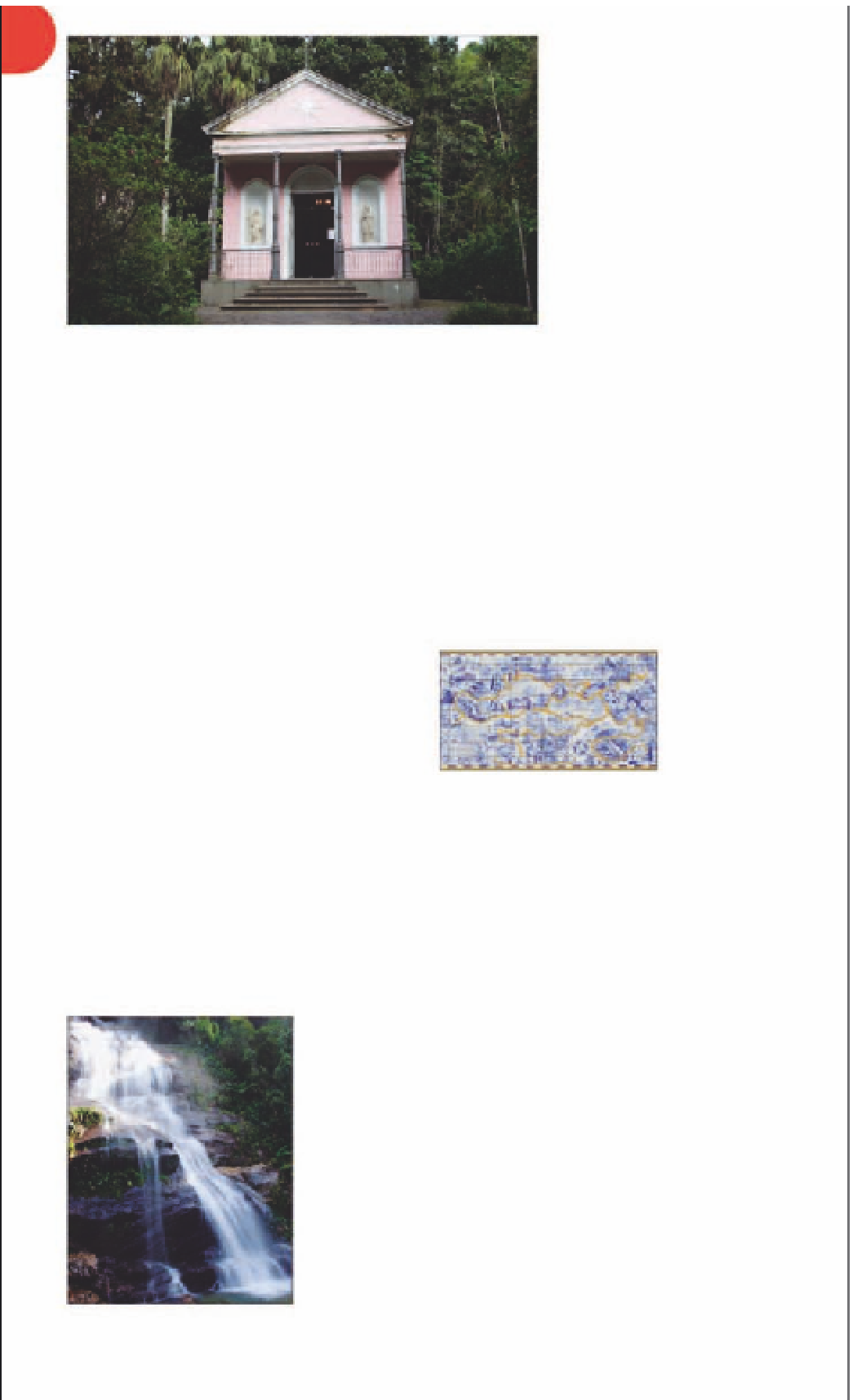Travel Reference
In-Depth Information
Baía de
Guanabara
v
Without Baía de Guanabara,
Rio de Janeiro would
probably have been known
by a different name. On
January 1, 1502, the navi-
gators Andre Gonçalves and
Amerigo Vespucci became
the first Europeans ever to
sail into the bay. Assuming it
was the mouth of a great
river, they called it Rio de
Janeiro or “River of January.”
Guanabara, meaning “Lagoon
of the Sea,” was the name
given to the dominant bay by
indigenous Brazilians and is
rather more accurate.
The bay is flanked by Rio to
its west and Niterói to its east,
and encompasses countless
islands. As well as the ferry
services that begin at Praça
XV, boats can be hired from
the
Marina da Glória
in
Flamengo Park, the center of
all nautical activities in Rio.
One of the more pleasant
ways to enjoy
the bay is by
taking the
special cruise
that starts from
the
Espaço
Cultural da
Marinha
(Navy
Cultural
Center) in
Centro. Centro has a number
of fine nautical exhibits,
including an Imperial Barge
built in Salvador in 1808, and
also offers a cruise on the
historic tugboat,
Laurindo
Pitta
, which was built in
England in 1910 and took part
in World War I. The cruise
lasts an hour and a half and
passes several interesting
sights along the way.
The Tom Jobim
International Airport is
located on the largest of
the islands in the bay,
Ilha
do Governador
, while the
tiny
Ilha Fiscal
houses a
palace built in 1889 at the
request of Emperor Dom
Pedro II in the style of a
14th-century French castle.
The castle's highlights include
its exceptional carved stone
work and cast-iron work, and
the turret's mosaic floor, which
is made from different species
The lush setting of the Mayrink Chapel, Parque Nacional da Tijuca
Parque Nacional
da Tijuca
c
Tel
(021) 2492 2253.
main gate named after the
French painter Nicolau Taunay
(1755-1830); the 19th-century
Mayrink Chapel
, featuring the
work of Candido Portinari
(1903-62), one of the most
important Brazilian painters;
the lovely Os Esquilos restau-
rant (
see p395
); and the hund-
reds of species of plants, birds,
and mammals that live here.
Many of the park's 150-odd
trails, originally made by
Brazil's indigenous people,
exist even
today. One of
them, dating
from the 19th
century, takes
walkers up
from Largo do
Bom Retiro, a
picnic spot in
the Floresta da
Tijuca, to the 3,940-ft (1,201-
m) high Tijuca Peak. It is easy
to get lost in the dense foliage,
so stick to the main trails and
do not go without a guide if
planning on trekking. Book in
advance if a guide is required.
Another attraction near the
Floresta da Tijuca is the
Museu do Açude
, a museum
housed in the Neo-Colonial
building that once served as
the residence of the success-
ful businessman, Raymundo
Ottoni de Castro Maya (1894-
1968). The museum is known
for its French, Dutch, Spanish,
and Portuguese tiles from the
17th and 18th centuries, and
for Castro Maya's personal
collection of Oriental art.
E
@
#
8am-6pm daily.
Estrada da
Cascatinha 850, Terra Brasil, (021)
2492 2252.
7
n
Covering 15 sq miles (39 sq
km), the Tijuca National Park
encompasses the last remain-
ing tracts of Atlantic rainforest
that once surrounded Rio de
Janeiro. It includes the Floresta
da Tijuca (Tijuca Forest),
Serra da Carioca (Carioca
Mountains), and the mono-
liths of Pedra da Gávea and
Pedra Bonita. The park's most
famous landmark is the tower-
ing statue of Cristo Redentor
atop Corcovado peak
(see
pp82-3)
. Other well-known
viewpoints are the Dona
Marta, the Vista Chinesa (with
a Chinese-style pavilion), and
the Mesa do Imperador
(Emperor's Table), all of which
offer spectacular city views.
Sights within the Floresta da
Tijuca include
Cascatinha do
Taunay
, a waterfall near the
Tiled map of park routes in
Alto da Boa Vista
Museu do Açude
Estrada do Açude 764, Alto da Boa
Vista.
Tel
(021) 2492 2119.
#
11am-5pm Wed-Mon.
&
free
Cascatinha do Taunay, one of Parque
Nacional da Tijuca's many waterfalls
on Thu.
8
7
For hotels and restaurants in this region see pp366-9 and pp394-6







































